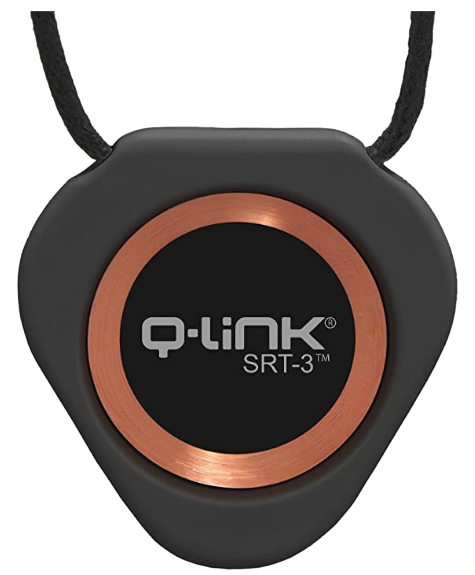Working from home has become the new normal for millions of people worldwide. While the convenience…
How To Test EMF Levels In Your Home Using An EMF Meter

Electromagnetic fields (EMF) are all around us, generated by the devices and technologies we rely on daily.
From cell phones and Wi-Fi routers to appliances and power lines, modern life is filled with sources of EMF.
While these invisible fields are a natural part of the environment, there is growing interest in understanding their potential impact on health and well-being.
Testing the EMF levels in your home is an essential step toward creating a safer, more balanced living space.
Whether you’re curious about the EMF emissions of your devices or want to ensure your home is within acceptable exposure limits, having the right tools and knowledge is key.
Keep reading to learn how to effectively assess your environment using an EMF meter and gain confidence in understanding your results.
1)) Purchase Or Obtain A Reliable EMF Meter
To begin testing the EMF levels in your home, the first step is acquiring a reliable EMF meter designed for accurate measurements.
These devices are specifically built to detect and quantify electromagnetic fields across various frequencies, giving you a clear picture of the invisible energy around you.
When selecting an EMF meter, consider factors such as its sensitivity, the range of frequencies it can measure, and the type of EMF radiation it detects, such as electric, magnetic, or radio frequency fields.
Reading user reviews and exploring features offered by reputable brands can help ensure you choose a high-quality device that meets your needs.
Investing in the right meter will be crucial in obtaining dependable results and empowering you to make informed decisions about your living environment.
2)) Turn Off Unnecessary Electronic Devices
Reducing interference from active electronics is a vital step in obtaining accurate EMF readings.
Start by identifying and turning off devices in your home that are not in use, such as televisions, computers, gaming consoles, and other gadgets that emit electromagnetic radiation.
This process helps to eliminate background levels of EMF that could skew your measurements, allowing the meter to provide a more precise reading of specific sources in your environment.
Pay special attention to devices connected to Wi-Fi or Bluetooth, as these often emit continuous signals.
By creating a controlled environment with minimal electronic interference, you’ll be better equipped to pinpoint the exact sources of EMF and assess their impact on your living space with greater accuracy.
3)) Set The EMF Meter Correctly
Properly configuring your EMF meter is a critical step to ensure accurate and meaningful readings.
Most EMF meters feature multiple modes or settings designed to measure different types of electromagnetic radiation, such as electric fields, magnetic fields, or radio frequency fields.
Begin by consulting the user manual to understand the specific capabilities of your device and determine the appropriate mode for the type of EMF you’re testing.
For instance, if you’re examining emissions from a Wi-Fi router, selecting the radio frequency measurement mode is essential.
Take the time to calibrate the device if required and adjust any necessary settings based on the manufacturer’s guidelines.
By aligning the meter’s configuration to the target measurement, you’ll be able to gather data that accurately reflects the EMF levels present in your home environment.
4)) Test Each Room Systematically
Testing each room in an organized and methodical manner is key to gaining a comprehensive understanding of the EMF levels throughout your home.
Begin by dividing your home into distinct areas, such as the living room, kitchen, bedrooms, and office spaces, and work through them one at a time to ensure thorough coverage.
Walk through each room while holding the EMF meter steadily, and take note of the readings displayed on the device as you approach electronic devices, appliances, or other potential sources of electromagnetic fields.
It’s important to measure at various heights and distances to identify both large-scale environmental patterns and specific sources of EMF.
Document your findings for each room so you can compare areas, track unusual hotspots, and prioritize necessary changes to reduce exposure where needed.
A systematic approach not only ensures accuracy but also provides valuable insights into how your household electronics and layout contribute to the overall EMF environment.
5)) Record EMF Readings In A Notebook
Keeping a detailed log of your EMF readings in a notebook is an essential step toward tracking and analyzing the electromagnetic environment in your home.
Start by creating a clear and organized format for your notes, including sections for the date, time, location, and specific readings for each type of EMF you measure.
When recording data, make sure to label each entry accurately, noting any nearby devices or appliances that could influence the results.
This will help you identify patterns or trends over time, such as fluctuations in EMF levels during certain hours or in specific rooms.
A well-maintained record provides a reliable point of reference for making adjustments to your living space and ensures that you can revisit the information later to confirm improvements or assess ongoing changes to your household’s EMF exposure.
Meticulous documentation is a powerful tool for maintaining a safer and healthier environment.
6)) Compare Readings To Safety Guidelines
Evaluating your EMF readings against established safety guidelines is a crucial step in understanding the potential risks within your living environment.
Begin by referencing standards set by organizations such as the International Commission on Non-Ionizing Radiation Protection (ICNIRP) or the Federal Communications Commission (FCC), which provide recommended exposure limits for various types of electromagnetic radiation.
Compare the data recorded during your measurements with these benchmarks to identify any areas where levels exceed safe thresholds.
Pay particular attention to zones where prolonged exposure occurs, such as bedrooms or workspaces, as these could have a greater impact on well-being.
By measuring your readings against these guidelines, you can pinpoint areas of concern and take informed steps to lower exposure, ensuring a safer and healthier home for you and your family.
7)) Identify High EMF Sources
Identifying high EMF sources in your home is a critical step toward managing and reducing your exposure to electromagnetic fields.
Start by focusing on common culprits such as Wi-Fi routers, cordless phones, microwave ovens, and other wireless-equipped devices.
Use your EMF meter to measure the intensity of emissions when these devices are in operation, keeping the meter at varying distances to pinpoint the exact range of their influence.
Pay close attention to areas near power outlets, electrical wiring, and large appliances, as these can emit significant levels of electric and magnetic fields.
Be mindful of hidden sources, such as smart home systems or devices in standby mode, which can still emit background radiation.
By systematically identifying these high-emission zones, you’ll be equipped with the information necessary to implement practical strategies such as reconfiguring device placement, limiting usage, or adding shielding measures to create a lower-EMF environment in your home.
8)) Mitigate EMF Exposure Where Needed
Mitigating EMF exposure in your home involves taking deliberate steps to lower the intensity and duration of electromagnetic fields in areas where levels are higher than recommended.
Start by turning off or unplugging electronic devices when they are not in use, particularly those in bedrooms or other spaces where you spend significant time.
Rearrange furniture and devices to increase the distance between high-EMF sources and areas where you sit, sleep, or work.
Consider using wired connections instead of wireless networks to reduce electromagnetic radiation from routers and wireless devices.
Installing shielding materials, such as EMF-blocking fabrics or paint, can also help limit exposure in specific areas.
For portable devices such as cell phones or tablets, enable airplane mode when possible and avoid keeping them close to your body for extended periods.
These practical measures not only reduce overall exposure but also foster a healthier and more balanced living environment.
Recommendation: Tri-Field EMF Meter – Model: TF2
The Tri-Field EMF Meter – Model TF2 is a versatile device designed to detect and measure magnetic, electric, and radio/microwave fields, making it an essential tool for identifying EMF pollution in modern environments.
With its ability to monitor 4G and 5G signals, Wi-Fi routers, Bluetooth devices, and more, this meter provides accurate and reliable readings.
Its dual-mode functionality and user-friendly display ensure ease of use for both beginners and professionals.
Take control of your home’s electromagnetic environment today—purchase the Tri-Field EMF Meter – Model TF2 and start creating a healthier living space!
Conclusion
Understanding and addressing EMF exposure is a vital step toward ensuring a healthier, safer, and more balanced living environment.
By learning how to measure electromagnetic fields, compare readings to established safety guidelines, identify high-emission sources, and mitigate exposure efficiently, you can take proactive control of your home’s electromagnetic landscape.
These practices not only protect your well-being but also enhance your overall quality of life.
With the help of tools like the Tri-Field EMF Meter – Model TF2 and a commitment to creating positive changes, you can foster a safer space for yourself and your loved ones.
Empower yourself with knowledge and solutions to reduce EMF risks and promote a harmonious and secure home environment.





